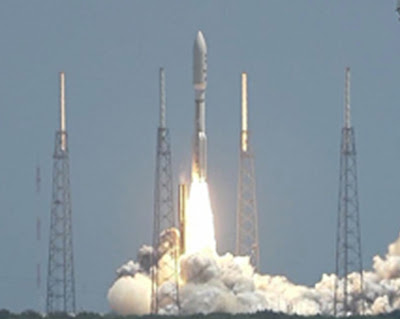NASA's solar-powered Juno spacecraft lifted off from Cape Canaveral Air Force Station in Florida at 9:25 a.m. PDT (12:25 p.m. EDT) Friday to begin a five-year journey to Jupiter. Juno's detailed study of the largest planet in our solar system will help reveal Jupiter's origin and evolution. As the archetype of giant gas planets, Jupiter can help scientists understand the origin of our solar system and learn more about planetary systems around other stars.
"Today, with the launch of the Juno spacecraft, NASA began a journey to yet another new frontier," NASA Administrator Charles Bolden said. "The future of exploration includes cutting-edge science like this to help us better understand our solar system and an ever-increasing array of challenging destinations." After Juno's launch aboard an Atlas V rocket, mission controllers now await telemetry from the spacecraft indicating it has achieved its proper orientation, and that its massive solar arrays, the biggest on any NASA deep-space probe, have deployed and are generating power.
"We are on our way, and early indications show we are on our planned trajectory," said Jan Chodas, Juno project manager at NASA's Jet Propulsion Laboratory in Pasadena, Calif. "We will know more about Juno's status in a couple hours after its radios are energized and the signal is acquired by the Deep Space Network antennas at Canberra."

No comments:
Post a Comment